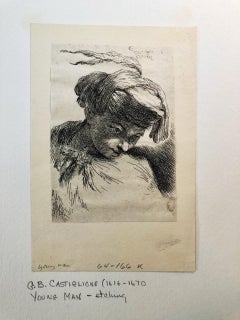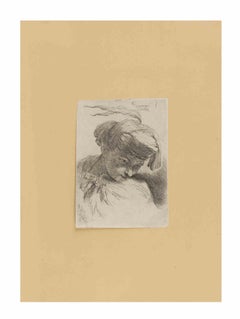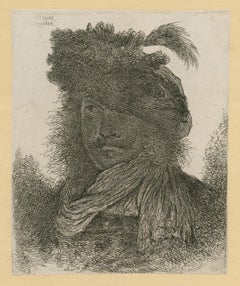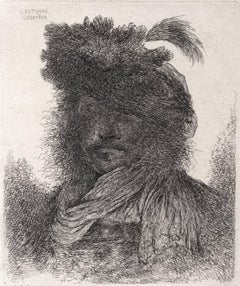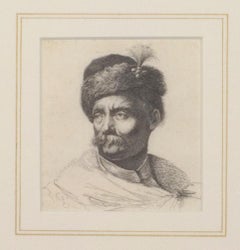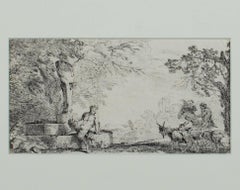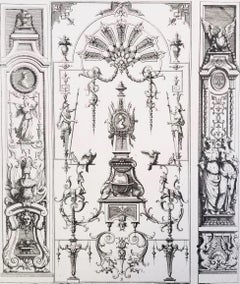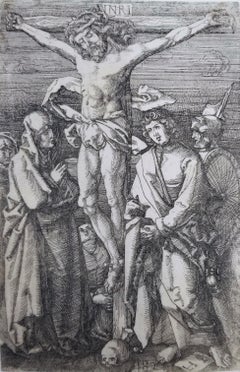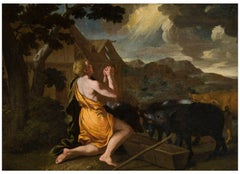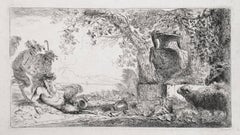Giovanni Benedetto Castiglione Art
Giovanni Benedetto Castiglione was profoundly influenced by foreigners. He first studied with local artists in his native Genoa, absorbing not only Tuscan Mannerism and Caravaggism but also the style of Peter Paul Rubens, who had worked in Genoa. From 1621, Castiglione also worked in Anthony van Dyck's Genoa studio. Early on, he was attracted to Flemish animal painting. Though he painted portraits, historical pieces and landscapes, Castiglione excelled in rural scenes with animals and influenced Italy's animal painting specialists. By 1634, Castiglione was in Rome, where he remained for about ten years. After returning to Genoa for a time, he worked for the Mantuan court in 1648, which had also employed Rubens. There Castiglione picked up the freedom of touch he saw in Domenico Fetti's paintings. One of the first Italians to appreciate Rembrandt van Rijn's etchings, Castiglione probably invented the monotype. Also admired for his fluent brush drawings in oil on paper, Castiglione influenced artists throughout Europe and virtually every Italian printmaker who followed. Despite his easy-going nature, his last works were intense, ecstatic compositions, reminiscent of Gian Lorenzo Bernini's contemporary style.
Mid-17th Century Old Masters Giovanni Benedetto Castiglione Art
Handmade Paper, Laid Paper, Tissue Paper, Etching
17th Century Baroque Giovanni Benedetto Castiglione Art
Etching
Early 19th Century Giovanni Benedetto Castiglione Art
Etching
17th Century Old Masters Giovanni Benedetto Castiglione Art
Laid Paper, Etching
17th Century Baroque Giovanni Benedetto Castiglione Art
Etching
Mid-17th Century Old Masters Giovanni Benedetto Castiglione Art
Etching
1710s Old Masters Giovanni Benedetto Castiglione Art
Laid Paper, Engraving, Intaglio, Etching
16th Century Old Masters Giovanni Benedetto Castiglione Art
Etching, Laid Paper
Early 2000s American Modern Giovanni Benedetto Castiglione Art
Etching
Early 20th Century Art Deco Giovanni Benedetto Castiglione Art
Etching
Early 20th Century Expressionist Giovanni Benedetto Castiglione Art
Etching
1970s Color-Field Giovanni Benedetto Castiglione Art
Etching, Pencil, Monoprint
1720s Old Masters Giovanni Benedetto Castiglione Art
Laid Paper, Engraving, Etching
1990s Baroque Giovanni Benedetto Castiglione Art
Paper, Ink, Linocut
Early 2000s Giovanni Benedetto Castiglione Art
Etching
Mid-18th Century Old Masters Giovanni Benedetto Castiglione Art
Handmade Paper, Laid Paper, Etching
1820s Old Masters Giovanni Benedetto Castiglione Art
Etching
Late 18th Century Old Masters Giovanni Benedetto Castiglione Art
Etching, Aquatint
17th Century Old Masters Giovanni Benedetto Castiglione Art
Canvas, Oil
18th Century and Earlier Baroque Giovanni Benedetto Castiglione Art
Etching
